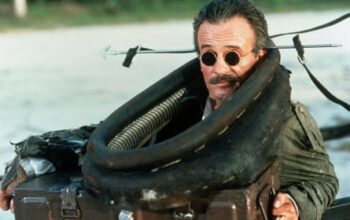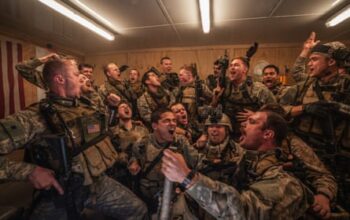I
In a time of increasing global tensions, there are certain symbols of status that a powerful country cannot go without. Nuclear weapons? Absolutely. A space program? Of course. But the newest must-have for geopolitical power is a high-flying, nationalistic blockbuster film about an elite air force. Everyone around the world couldn’t help but notice the buzz surrounding Tom Cruise’s Top Gun: Maverick in May 2022, and a year later, China released its own version, Born to Fly. Now, India is joining in on the trend with its own fighter pilot extravaganza, Fighter, starring Hrithik Roshan, whose signature hairstyle alone is considered a national icon.
Russia has not yet shown any signs of recovering from its decline in global power, while China and India are on the rise. Their leaders, who have autocratic tendencies, are eager to showcase their soft power. This trend is reminiscent of the 1980s in the United States, when there was a surge of jingoistic sentiment fueled by popular militaristic movies such as Top Gun, Rambo, Commando, Red Dawn, and others. China has been demonstrating its prowess in the film industry for the past decade with action-packed films like the Wolf Warrior franchise and Operation Red Sea, as well as historical films with patriotic themes. India’s Prime Minister Narendra Modi has not been as successful in influencing the country’s film industry, but there have been some sporadic productions with aggressive messages towards Pakistan, such as Baaghi 2 and Uri: The Surgical Strike. However, the recent release of Fighter, coinciding with India’s 75th Republic Day and featuring Hrithik Roshan holding the Indian tricolour, known as Tiraṅgā, upon emerging from a helicopter, suggests that there may be increasing pressure for the Indian film industry to follow suit.
The movie “Top Gun” is considered the ultimate achievement in military film-making, with its visually stunning depiction of the modern superpower’s elite capabilities. It’s no surprise that countries like China and India have expressed interest in creating their own version. Released in 1986, the film was not only the highest-grossing film of the year and launched Tom Cruise as an American icon, but also served as a form of soft-power projection for the US military and a recruitment advertisement. Directed by Tony Scott, known for his flashy advertisements, the movie glamorized warfare and made it seem like an exciting experience. This was intentional, as the script was approved by the Department of Defense in exchange for access to military equipment and locations. The production would not have been possible without this cooperation. To give an idea of the scale, just one F-14 fighter used in the film cost more than twice the entire budget. In essence, “Top Gun” can be seen as propaganda.
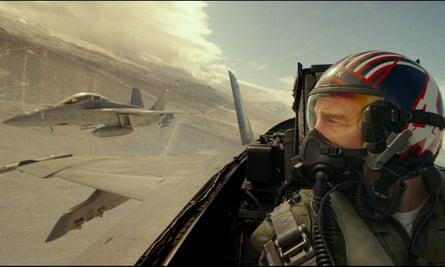
China learned that replicating the success of Top Gun with their film Born to Fly was not as simple as expected. The story follows a group of aspiring pilots and aims to criticize foreign powers who disrespect Chinese airspace, including two interlopers with American accents who boast about their freedom to come and go. Additionally, the film serves as a showcase for China’s J-20 stealth fighter. Director Liu Xiaoshi had a long history with the Aviation Industry Corporation of China, but it appears that the massive earnings of Top Gun: Maverick (which did not include earnings from China) made Beijing hesitant to release Born to Fly and potentially engage with the “enemy”. The film was eventually released in 2021, earning only $117.3 million, a small amount compared to the huge profits of Wolf Warriors.
The issue lies in the cockpit, specifically with the human element portrayed in the film. Compared to Maverick from Top Gun, whose rebellious attitude adds a unique dynamic, the protagonist Lei Yu (played by Wang Yibo, a member of a boy band) is unexciting. While Top Gun had the option to approve scripts in exchange for military equipment, Chinese directors are required to have their scripts vetted. This is evident in Born to Fly’s muted depiction. There is no hint of romantic relationships between soldiers, nor any subtext of homosexuality that would catch Quentin Tarantino’s attention. The excitement of being in the Chinese air force apparently includes occasional dumpling nights with superiors, an odd fascination with folding parachutes, and a masochistic mentality of sacrificing for the greater good, often portrayed in Chinese state-funded military films.
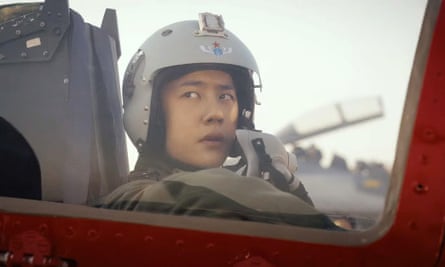
The movie Fighter is expected to be more entertaining and incorporate elements of Bollywood. It was created in collaboration with the Indian armed forces and filmed partly at the air force academy in Dundigal, a city in southern India. However, it is unlikely that the film will be a critical look at military training methods, as Roshan does not have the same level of immunity as superstar Shah Rukh Khan, who has been able to make statements in his films that challenge pro-Hindi nationalist narratives. In fact, Khan’s recent patriotic film Pathaan features a protagonist of Afghan Pashto descent, providing a diverse perspective within the popular “Jai Hind” genre.
Like its enthusiastic American predecessors from the 1980s, Fighter may not have a rebellious intention. However, this does not mean that it will not use any clever tactics – if it has learned its lessons well. This is the major strategic advantage of the US soft-power approach: presenting propaganda in the form of compelling entertainment. Despite its efforts to promote certain beliefs, Top Gun is also incredibly enjoyable, exuding confidence and sexual tension – at opposite ends of the spectrum – from every aspect. Additionally, the franchise is emotionally skilled: the sequel successfully transforms the military’s “talking points” into a relevant modern narrative about the declining influence of the US, while also tapping into our yearning for the bold Maverick.
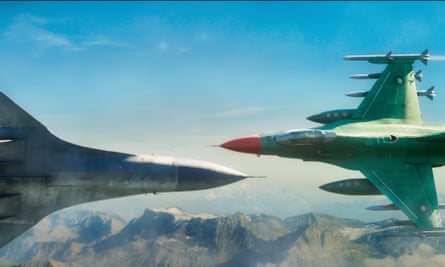
Neither movie takes a clear stance, with most of the action occurring in training schools and the final confrontations taking place in international waters and an unspecified Middle Eastern nation. Hollywood purposefully avoids specific details to appeal to a wide audience and avoid controversy. However, there is a deliberate agenda behind these choices, with the military playing a significant role in shaping Hollywood’s content through a nondescript office on Wilshire Boulevard.
This phenomenon can be described as covert propaganda, where the audience accepts or tolerates the political message because it is disguised. While China and India may prioritize rapid growth, they will not have the same level of impact unless they also learn to operate discreetly.
Source: theguardian.com
